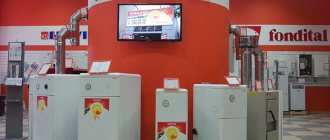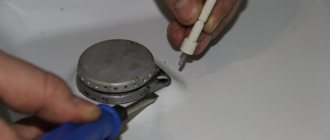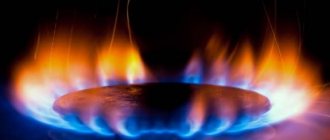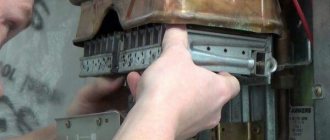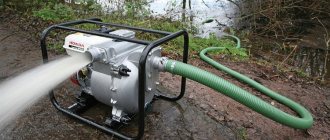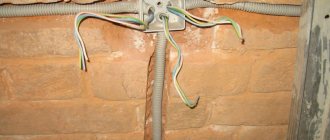Gas equipment, even with scheduled preventive cleaning, may malfunction. But for every breakdown there is a reason, knowing which you can maximize the service life of boilers, saving a decent amount of money.
Before we look at the main types of faults in boilers, it is worth noting that any repair and scheduled maintenance work must be performed exclusively by specialists who have permission to provide these services.
The boiler does not ignite
No matter how funny it may sound, in 95% of all calls for technical assistance for the repair of gas equipment, this is the problem that people have most often. This is especially true for the first ignition after the boiler has been turned off for a long time.
What can be repaired without gas workers?
There are several main causes of malfunctions. This is the incorrect operation of gas equipment, the presence of an unacceptable microclimate in the boiler room, untimely maintenance of all systems or low-quality components.
When making repairs yourself, be sure to observe safety precautions and strictly follow the instructions. First of all, the user should decide which parts of the gas boiler can and cannot be repaired on their own.
When repairing gas equipment, the main danger is a possible gas leak. Therefore, it is necessary to carry out all manipulations for installation and dismantling of units and parts of the device with caution. Particular attention should be paid to replacing components related to the fuel supply system.
Knowledge of typical malfunctions of gas boilers and methods for eliminating them allows you to make simple repairs yourself. It is worth remembering that serious repairs can only be carried out by gas workers, but there are procedures available to independent home craftsmen
Boiler manufacturers strongly recommend calling gas service employees to correct problems associated with breakdowns of the gas supply system and built-in electronic devices. An inexperienced person will not be able to independently configure, repair and restore the functions of specific automation in a gas boiler.
There are three main elements in the design of a typical gas boiler:
- Gas burner closed/open type;
- Specific security blocks;
- A heat exchange system consisting of one or two internal devices, the number of which is determined by the number of circuits served.
If all the components involved in the operation of the boiler are classified according to their functional purpose, then they can be divided into the following groups: control system devices, hydraulic system devices, burner and gas supply unit, smoke exhaust, boiler operation control devices, multi-level safety systems.
Most often, users have the following problems: the boiler emits an unpleasant odor of gas, does not turn on, turns off during operation, does not heat the pipes or smokes
Most of the listed elements cannot be changed or repaired yourself. In case of tampering with the boiler design, its owner loses the right to restore operability at the expense of the manufacturer during the warranty period. But you definitely need to know what and how the craftsmen from the organization with which the contract for servicing the unit and supplying gas are repaired.
However, the owner of gas equipment, seeking to extend its service life, can independently produce:
- Chimney cleaning. It is performed in cases where traction is weakened by mechanical manipulation or using chemicals.
- Checking the tightness of water supply connections, gas supply lines, and heating circuit branches.
- Installation of a voltage stabilizer.
We warn you once again that all actions that require removing the casing from the boiler must be performed by a gas service representative.
However, if the guarantee is not important to you, then you can do it yourself:
- Manual external cleaning and internal flushing of the heat exchanger/heat exchangers. They are easy to dismantle, carry out the necessary procedures, and then install them back. In this case, it is effective to use homemade water solutions of citric acid (100g/1l) or suitable household chemicals that can dissolve calcium deposits.
- Supercharger fan maintenance. Replace the fuse or the fan itself, check the electrical circuit connected to it, and lubricate the bearings with technical fluid.
- Cleaning the injectors. Clogged nozzles cause a weak burner flame. They need to be periodically cleaned to remove any deposits with fine sandpaper and dirt removed with a rag containing household chemicals.
- Adjusting the pressure in the system.
- Finding a problem due to which the boiler does not turn on.
In order to decide how and how to repair a gas boiler, you need to visually inspect it and, if necessary, carry out a series of diagnostic procedures. Self-repair is possible in cases where the manufacturer’s warranty has already expired.
If you smell gas, you should immediately forget about manual intervention. It is necessary to turn off the gas supply, immediately carry out burst ventilation and call an emergency. The rules for operating gas equipment are described in detail in the following article, the contents of which we strongly recommend that you familiarize yourself with.
Causes
Let's consider the reasons from the most trivial to serious breakdowns:
- There is no gas supply in the system: the valve on the pipe is closed or there is no gas directly in the room.
- The boiler is not plugged in: there is no spark, the flame cannot be lit, although there is a slight smell of gas.
- The hood is closed: the boiler gives a spark, there is ignition, but the flame goes out very quickly.
- The fuses on the electronic board have burned out: this often happens during sudden power surges in the network.
- Problems with the ionization electrode: it either moved away from the board or burned out completely.
It’s not difficult to determine “by eye” why a gas boiler won’t ignite, so before you hang up the service calls, first check yourself: have you done everything to light the boiler?
About the manufacturer
Since 2006, Keber gas boilers have been produced by the domestic company, which is part of the Tactical Missile Arms OJSC corporation. These heating devices are well adapted to Russian operating conditions; they operate smoothly even in places characterized by very low temperatures.
If necessary, such heating devices can be used for heating premises in the Far North.
Keber's product range includes both household and industrial models.
Single-circuit and double-circuit units are distinguished. The first are used exclusively for heating, while others provide the room not only with heat, but also with hot water.
Causes
In fact, there are not so many reasons for such a malfunction:
- The pump is not connected to the network: accordingly, the heating element quickly overheats, and water does not circulate through the system, but is concentrated in the boiler.
- The pump is connected to the network, but is faulty: water is not circulating or is circulating very slowly (slower than heating).
- Batteries are airy: A large amount of air has accumulated in the batteries, which by nature heats up faster than water.
- Malfunctions in the thermostat: the controller has burned out, or the wiring has oxidized.
Be sure to check the readiness of your own heating system for the first start-up. Lack of the required water level and pressure leads to an emergency shutdown of gas equipment.
The principle of operation of a gas burner
It consists of the following: air and fuel are mixed, and the combustion products must go through the entire combustion process.
We can conditionally distinguish three tasks in the operation of this element of the system:
- preparing air and fuel for combustion by determining temperature, speed and direction;
- mixing these elements;
- combustion, that is, oxidation of combustible elements with the help of oxygen, combustion due to the nozzle at the end point of the tube.
The reasons that the burner does not light up must be sought in the principle of its operation.
The burner itself is essentially a metal tube that is hollow inside and has several holes called nozzles. The gas burns in it, heading towards the combustion chamber. The mixture of combustion products is discharged outside. And if the air is collected by natural injection, then the gas is distributed and directed inside thanks to the system of indicated holes.
If the gas boiler does not ignite, it means that the combustion conditions are not met: there is no gas, no air is supplied, and combustion products do not come out. Understanding the cause of problems allows you to eliminate them in a timely manner and restore system operation. When lighting a gas boiler, be careful. This equipment requires special care.
How to solve a problem?
A list of things you can do yourself without calling a specialist:
- Fill the heating system with water: open the water supply tap or add water to the expansion tank to the mark on the pressure gauge recommended by the manufacturer.
- Unscrew the nuts on the batteries to release excess air. This must be done on each coolant separately until water begins to drip.
- Check the pump for proper operation. In some cases, increasing its power and speed helps. You can put your ear to the pump and hear whether it is working or not.
Expert opinion
Grebnev Vadim Savelievich
Heating system installer
The rest of the repair work related to assessing the performance of the thermostat and the central control board is the responsibility of the craftsmen.
This problem indicates the presence of weak draft in the exhaust system, or a malfunction of the central board that blocks the operation of gas equipment.
Useful tips
To start the boiler, it is necessary to supply power and set the heating regulator to the required operating position. The presence of a weak hum indicates that the circulation pump has started working. Using a screwdriver, lightly unscrew the cover on the detected part. But this must be done before the water begins to flow. If liquid begins to seep out, screw the cap back into place. Such actions are performed several times and after this the air pockets will be completely removed from the system. The gurgling sounds will also disappear and the pump will run quietly.
How to solve a problem?
First, check if the hood is open and does it need cleaning? If this option does not help, then you should call a technician who will check all the systems and find out why the boiler is going out.
The situation is as follows: you filled the heating system with water, raised the pressure gauge values to the recommended values, started the boiler, but after a certain time you noticed that the radiators were cold and the boiler itself turned off. This is all due to the operation of the thermostat and protection, which shut off the gas supply if the pressure level in the heating system has reached its minimum.
Peculiarities
The ATEM brand has invested all its efforts in the development and production of high-quality devices for autonomous heating. For more than 27 years, the company has been providing heat to its consumers in the form of Zhytomyr gas boilers. Since the introduction of the first boiler, a huge rebranding has been carried out, the device has received changes from the internal base of spare parts to the external design. Today, the Zhitomir boiler is a neat, small-sized unit with switching instructions that even a child can handle. The main quality inherent in boilers of this brand is the quality and reliability of the device. Product specifications have also changed as new technologies emerge. Not only these components, but also many other facts allowed the ATEM brand to receive the European Quality award.
Causes
This picture appears in several cases:
- You forgot to add water to the expansion tank.
- They opened the water supply tap to the heating system, but forgot to fix it, and when the water in the central water supply was turned off, the water left on its own.
- There are various types of leaks that gradually reduce the water level in the system.
Again, you need to check exactly how the pressure gauge does its job. It is rare, but it happens that this device does not work correctly, blocking the operation of the entire heating system.
Causes
The key reason is scale on the heat exchanger tubes, which significantly narrows their clearance. As a result, at the same gas flow rate, the heat transfer process is significantly reduced.
Expert opinion
Grebnev Vadim Savelievich
Heating system installer
Do not use tap water to fill the heating system. When it heats up, scale forms, which will have to be cleaned periodically. Softened water, which can be purchased in specialized stores, is better suited for these purposes.
How to solve?
If the pump is working properly, but there is no heat in the house due to significant gas consumption, then you need to clean the heat exchanger. The procedure is performed only by specialists who use special liquids of high acidity.
Incorrect errors on the screen
The boiler went out for some reason, and a code appeared on the display. Naturally, the first thought is to look at the instruction manual, but what to do if such a code is not there?
Methods for self-diagnosis of faults
Often the user is in a situation where he is not sure what exactly is broken in the gas boiler. In such cases, there is no need to rush to remove and repair anything. It's risky and dangerous. Before work, you should diagnose the equipment and identify the exact causes of malfunctions.
If the boiler smokes, this phenomenon is usually caused by the consumption of low-quality gas or lack of air. You can check the cause of the problem yourself
Modern gas boilers are equipped with various sensors that reflect a number of important functional indicators of the unit. They monitor changes in temperature, pressure and other parameters. In the event of a malfunction, modern boiler models provide automatic shutdown of the device.
The source of the breakdown is identified by the consequences it causes. For example, you can visually see fumes, leaks, and sparks. You can smell a gas leak or short circuit by smell. From the changed sound of the gas boiler, it becomes clear that the unit has malfunctioned.
The instructions included with the purchase of the device describe the most common faults in the boiler model being purchased and how to detect, diagnose, and eliminate them. It also indicates what a specific error code and blinking lights on the dashboard mean.
So the light can blink in different modes: fast or slow. Or burn constantly. The color of the light bulb can be red, green or yellow.
The manufacturer's instructions indicate all possible error codes that may appear on the display. It also explains how to troubleshoot the problem.
You should not throw away the instructions from the device, as they may be useful to the gas technician you called to fix the problem. It indicates the characteristic features of the gas boiler model, the dimensions and location of components and parts.
Causes
Loud operation of the equipment is caused by the following possible reasons:
- There is a shortage of water in the heating system, the presence of airiness - you should definitely check the pressure gauge readings, and also bleed the air from each battery.
- The formation of scale in the coolant, which breaks off with temperature changes and contributes to overheating of the antifreeze.
If the boiler becomes noisy, do not ignore it, but immediately call a specialist to find and fix the problem.
Rapid wear of unit components
Cycling leads to rapid breakdown of gas boiler components. The fact is that the units work to maintain a given coolant temperature. Once it is reached, the unit turns off. When the liquid temperature drops, the boiler turns on again. This way the device saves gas. If the coolant cools down too quickly, then shutdowns and starts occur too often - this leads to rapid wear of the equipment. The following measures will help resolve the problem:
- install a modulation type burner;
- adjust the thermostat;
- install a heat accumulator.
How to solve?
Usually the problem is solved by cleaning the heat exchanger with special acid compounds. Secondarily, the condition of the heating system is assessed and excess air is removed from the radiators.
Jokes with gas equipment are bad, so all repair work should be carried out only by specialists in this industry. If you have the slightest suspicion that the boiler is not working as it was before, then you should not hesitate to call the experts.
Experts also recommend:
- Do not ignore the annual scheduled technical inspection of the serviceability of gas equipment. The technicians will clean the heat exchanger and look inside the boiler. If there are any malfunctions, they will be eliminated. This will maximize the life of the boiler and also protect your life from possible risks.
- Never repair a boiler yourself using manuals found on the Internet. This does not guarantee full serviceability of the equipment, which is fraught with negative consequences.
- Pay attention to the nuances of operating the model you choose. Don’t be lazy to study the documentation, which describes in detail the sequence of actions in a given situation.
In conclusion, it is worth noting that all problems in gas equipment sooner or later make themselves felt. Operation of faulty equipment can lead to a gas explosion, which is extremely dangerous to life. Observe all safety precautions and do not ignore the rules for operating gas equipment.
Basic malfunctions and their elimination
After carrying out diagnostic procedures and identifying a specific problem, you need to begin solving it. To do this, you will need some tools and components depending on the situation. Most problems can be easily fixed with a tool that is always at hand.
Before starting work, it is important to disconnect the gas boiler from the electrical network. You also need to shut off the gas supply by turning off the gas tap. Even in cases where repair procedures do not affect parts in contact with gas, the fuel supply must be turned off in accordance with safety regulations.
Volatile boilers quite often break down due to voltage surges. As a result, not only the settings are reset, but also sensitive sensors become unusable
In some cases, it is not possible to estimate approximately the duration of the required repair work. If in such a situation the temperature outside is below zero, then a significant decrease in the temperature in the room is possible. And therefore, the water in the system will freeze.
To prevent ice plugs from forming in the boiler coils, the anti-icing system is never turned off for long periods of time. For example, if the boiler is not used for one or two days, all volatile devices are turned off, except for this function. It is possible to completely disconnect it from the power supply only if the unit is preserved for a long period.
Also, before you begin repairing the boiler and dismantling its internal components, you need to make sure that the working surface of the device has an acceptable temperature. During operation, the casing and appliances of the boiler heat up significantly, and contact with some parts can lead to burns.
Gas boiler does not turn on
Sometimes, when you try to turn on the boiler, you discover that the device simply refuses to work. First of all, you should make sure that the device is connected to the electrical network. Then you need to check whether the switch in the distribution machine is turned on.
If, after inserting the boiler plug into the socket and turning it on, the machine knocks out, then you should remove the plug from the socket. Then you need to inspect the wiring for faults
If it turns out that the device is connected to a working outlet, but still does not start, then you need to disconnect the boiler from the network and carefully remove its protective casing. It is necessary to carefully inspect the internal elements of the boiler for signs of a short circuit. Such signs include the presence of a burning smell and soot on the internal elements.
If there are no signs of a short circuit, then you need to inspect the fuse and the electronic board. If a blown fuse is detected, you need to install a new one, turn on the boiler and check its functionality. Sometimes after replacement the new fuse immediately burns out. This usually indicates that there is a serious problem inside the boiler or a problem with the wiring.
A common problem with electronic boards is that they get wet. It is better to dry it with a regular home hairdryer, then leave it for a couple of days until the moisture has completely evaporated.
Electrical wiring must be checked for correct connection and wiring. You need to make sure there are no exposed wires or short circuits.
If it is found that the fuse is OK, then you need to inspect the varistor. This device protects the boiler from voltage surges. Perhaps there was a serious voltage surge earlier and the varistor exploded. Only a small part of it may remain. To solve this problem, you will need to resolder the varistor using a blowtorch and the required material.
A varistor is a semiconductor resistor. If the voltage rises to too high a level, it redirects it through itself, thereby protecting the device
In cases where the boiler is accurately connected to the electrical network, and the fuse and varistor are in perfect order and after inspection it was not possible to find any visible causes of starting problems, you should call a gas boiler repair specialist. Most likely there is a serious internal problem that will be difficult to fix at home.
A number of models of gas boilers, which are designed to display an error code on the dashboard, do not turn on and do not display an error code at the same time. This problem often manifests itself when the circuit of a temperature sensor installed in a room or outside is broken.
It is necessary to inspect the room sensor; perhaps it is unplugged or its batteries are dead. Then you need to replace the batteries or plug the plug into the socket. If the boiler panel does not show the temperature, then most likely there is a problem with the thermostat and it is advisable to start looking for the problem with it.
Problems with filter and pump
The boiler may not operate properly due to a clogged cold water filter. To clean it, you need to turn off the water supply and remove the filter mesh. Rinse it under running water or replace it with a new one.
The coarse filter of the water supply system provides reliable protection of the boiler system from large foreign particles. If contaminated water flows through the water supply, the filter often becomes clogged.
Boiler users may also encounter problems with the pump. The pump stops pumping water when the rotor is broken or air accumulates inside it. First of all, the serviceability of the rotor is checked. To do this, unscrew the nut from the pump and drain the water. Then you need to insert a flat-head screwdriver into the slot and force the axle to rotate. Sometimes the pump jams or sticks.
If it turns out that the pump is broken, you will need to disassemble it yourself and find out the cause of the failure. Having determined which part has broken, you need to order it from a gas equipment store or from a boiler seller. Pump parts are changed at home or in a workshop.
If air has accumulated in the pump, then it is necessary to open the air vent slightly and wait until the excess air comes out. The air vent is closed with a tight-fitting cap. The process of releasing air is accompanied by a characteristic sound.
The pump is often installed when installing a heating system in private homes. It allows warm water to circulate through a closed circuit and ensures equal heating of all radiators
If the pressure gauge needle is in close proximity to the red zone, then you need to turn on the boiler and heat the water in the system. If, with low heating, the pressure rises strongly in the range from 0.7 to 1.5 bar, then you need to carry out a procedure to add air to the expansion tank.
Air is added after the pressure in the system has been reduced to zero. This is done by opening the tap and draining the water. Then, using a pump or compressor, the pressure in the tank is pumped up to 1.3 bar. After this, you need to bring the pressure in the system to 1.5 bar.
Heat exchanger cleaning procedure
The cause of boiler overheating is often faulty automation or a clogged heat exchanger. If the automation of a gas boiler will most likely have to be repaired by a service center, then the heat exchanger can be cleared of blockages at home. To do this, you need to turn off the boiler and wait until it cools down. Turn off all taps and remove the cover of the device.
All electrical components and parts, the pump and control devices must be tightly covered with plastic film so that water does not accidentally get on them. By opening the tap or valve of the gas boiler, you need to drain the remaining water from it.
Next, you need to dismantle the burner block with the manifold, remove the fan from its seat, disconnecting the fasteners securing it to the combustion chamber. After which the return pipe is disconnected from the heat exchanger.
Water heats up unevenly due to impaired thermal conductivity. This occurs due to the accumulation of a large layer of scale on the walls of the heat exchanger. Uneven heating causes alternating water supply at different temperatures
To remove the heat exchanger, you must first disconnect the overheating sensor, then remove the combustion chamber. To do this, first unscrew three self-tapping screws, after which the camera along with the cap is pulled towards itself. After which the cap is detached from the chamber and the heat exchanger is disconnected.
The heat exchanger itself is first mechanically cleaned using a brush and emery cloth. Then you need to hold the part in a 10% solution of citric acid or household chemicals that dissolves mineral deposits. Soaking in the solution should run for about 10-15 minutes.
Next, the solution is poured into the internal pipeline and kept there for a period of similar length. Afterwards everything is drained and washed thoroughly with running water. Reassembly is carried out in the exact reverse order. In order not to forget the sequence, it is recommended to take a photo of each step on your phone during dismantling.
If you first read the recommendations for cleaning the heat exchanger and the instructions for disassembling the gas boiler, the preventive cleaning process will not take much time
It is recommended to clean the heat exchanger every one and a half to two years.
Solving the problem of poor traction
Boilers with an open combustion chamber sometimes lose draft power. To determine the cause of this malfunction, it is worth looking directly into the combustion chamber. Perhaps it is clogged with soot, soot or decay products. You need to brush and vacuum this part.
Models with a closed combustion chamber are equipped with coaxial chimneys, which have the following disadvantages. In the cold winter, drops of water fall from the outer pipe into the inner one, and there the water freezes and turns into an icicle.
Ice in the space between the pipes blocks air access to the gas boiler and, therefore, reduces the supply of fresh air required for combustion. To solve this problem, the street part of the chimney is insulated or holes are drilled in the outer pipe to drain condensate.
There are situations when foreign objects and waste get into the chimney. In such cases, you need to carefully dismantle the pipe and clean it of excess contents. Problems with a gas boiler occur when the coaxial chimney becomes excessively clogged. Soot needs to be cleaned out at certain intervals. Then the boiler will work long and efficiently.
It is worth noting that the accumulation of soot in a gas boiler is a rather rare occurrence. Gas does not emit too much soot when burned. Therefore, the manufacturer usually recommends chimney cleaning every two or three years.
A pipe cleaner is quite easy to make yourself. However, it can also be purchased in stores at a reasonable price.
Cleaning the chimney is carried out as follows. It is necessary to turn off the boiler, turn off the gas and water supplies and wait until it cools down. Remove the external protection of the boiler and disconnect the chimney pipe from it. Cleaning can be done mechanically or chemically.
It is convenient to clean the lower part of the chimney pipe directly adjacent to the boiler with a long-handled metal brush and then use a brush. After this, you can use chemical solutions. After cleaning the inside, you need to start cleaning the outer outlet of the pipe.
There are several ways to clean the chimney with your own hands while on the roof. Most often, a special metal brush is used on a rope with a weight attached to it. In this case, the circumference of the cleaning tool must correspond to the circumference of the chimney.
Alternately lowering and raising the mechanism, the pipe walls are cleaned. The soot falls down and needs to be shaken out, removed or vacuumed from the inside of the chimney.
You can also clean the chimney using a powerful vacuum cleaner specially designed for similar procedures. This device has pockets for drawing in waste. And the hose is long enough to clean the entire chimney.
In special cases, it is worth calling a chimney sweep who has a vacuum unit designed for cleaning chimneys. This expensive device will completely clean the chimney of contaminants without damaging the system.
When cleaning the chimney and other elements of the boiler, be sure to wear a mask on your face. It will protect the owner from inhaling soot and getting harmful microelements into the lungs
If you do not solve the problem of weak traction in a timely manner, you may encounter a number of negative consequences:
- Carbon monoxide entering the premises and causing harm to the health of residents;
- Soot accumulations increase the risk of fire;
- Due to carbon deposits on the boiler walls, heat loss and gas consumption increase.
Possible problems indicate that it is necessary to regularly carry out preventive cleaning of the gas device.
Replacing components and eliminating leaks
If leaks and water leaks are detected at the gas boiler connection points, the water supply should be shut off. Then, using a wrench, you need to unscrew the connection, remove the remaining tow and check the threads for damage. After which you need to apply a new layer of tow or FUM tape and screw the pipes tightly.
If, as a result of the inspection, it is discovered that the water pipe is damaged, then you need to replace it yourself or call a plumber.
The use of FUM tape, plumbing thread, liquid or anaerobic sealant protects pipe connections from leaks. Before re-screwing the pipes, you must thoroughly clean the threads from foreign elements.
If you detect the smell of gas in the air, turn off the lights and all sources of fire. Open the window and ventilate the room. You can check the location of the leak using a soap solution. After applying it, a soap bubble appears on the pipe. Gas leaks are eliminated in the same way as on a water pipe.
Sometimes after diagnostics it turns out that it is necessary to replace the burner in a gas boiler. You can replace the burner yourself, but you should install exactly the same burner model. It is necessary to disconnect all communications, and when dismantling, be sure to remember the correct location of all elements connected to the burner.
If the boiler refuses to maintain the set temperature, then a broken sensor is usually to blame. Temperature sensors can be surface-mounted or submersible. Overlays are easily mounted on pipes and replaced without difficulty. When installing an immersion sensor, you need to drain the water from the boiler and, after installing the sensor, seal the thread.
In order to maximize the safety of your own space and eliminate the possibility of excess toxins due to the operation of gas equipment, it is recommended to use a carbon monoxide detector at home. The principle of its operation, selection and installation rules are described in the article we recommend.
